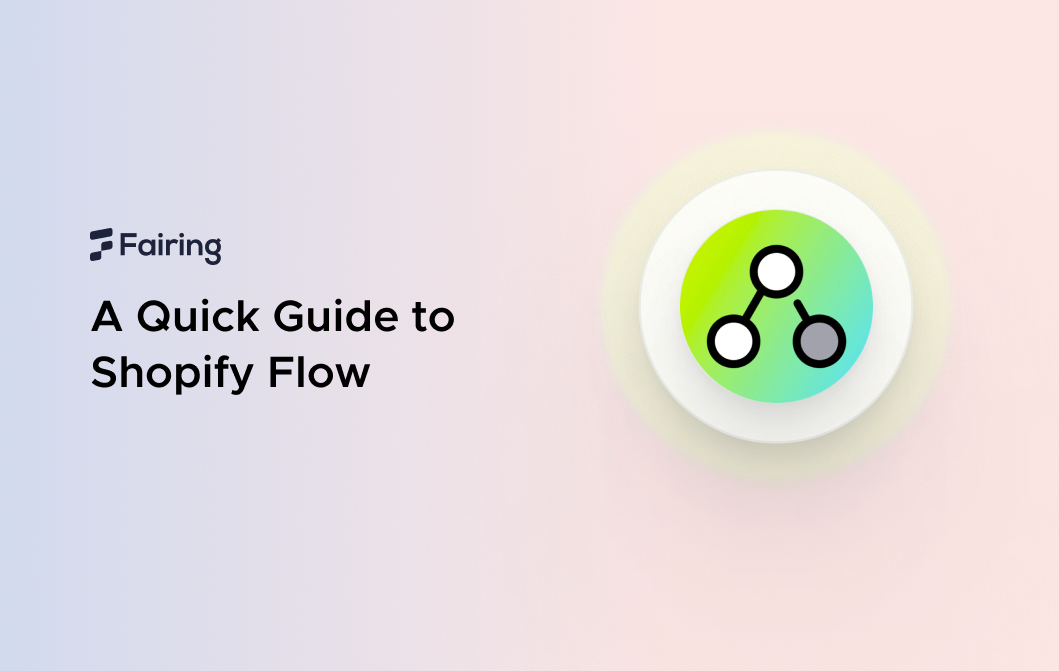A Quick Guide to Shopify Flow
Automating workflows, also known as automation, has become increasingly vital for businesses in our never ending search for efficiency.
Automation allows businesses to focus on their strategic initiatives and innovation rather than the task itself. It leads to cost savings and increased productivity but also improves overall operational agility. This makes it easier to adapt to market changes and customer demands.
As a result of that, workflow automation has now been established as a crucial component for modern businesses. It is a key tool to maintaining competitiveness and fostering sustainable growth.
What is Shopify Flow?
Shopify Flow is a free application created by Shopify inside the app store. It empowers you to build custom automations that help you run your business more efficiently.
Flow makes it easy to create unique workflows without needing to code. This gives you more time to focus on growing your business. Inside Flow, you can connect your apps together to coA Quick Guide to Shopify Flow
Automating workflows, also known as automation, has become increasingly vital for businesses in our never ending search for efficiency.
Automation allows businesses to focus on their strategic initiatives and innovation rather than the task itself. It leads to cost savings and increased productivity but also improves overall operational agility. This makes it easier to adapt to market changes and customer demands.
As a result of that, workflow automation has now been established as a crucial component for modern businesses. It is a key tool to maintaining competitiveness and fostering sustainable growth.
What is Shopify Flow?
Shopify Flow is a free application created by Shopify inside the app store. It empowers you to build custom automations that help you run your business more efficiently.
Flow makes it easy to create unique workflows without needing to code. This gives you more time to focus on growing your business. Inside Flow, you can connect your apps together to complete even more jobs.
From automating inventory tasks like reordering and restocking to managing fraud concerns, Flow can support nearly any task you can think of.
For reference, Shopify Flow is in the same vein as applications like Zapier that help you create workflows.
There are three main components to a workflow in Shopify Flow: Trigger, Condition, and Action.
Trigger
Workflow triggers are events that cause a workflow to run. In Flow, this will be an event that occurs in your workflow’s repository. You will establish this trigger in your set up.
Example: A customer responded to your Net Promoter Score (NPS) question in your post-purchase survey. That question looks something like “On a scale from 0 to 10, how likely are you to recommend our product/company to a friend or colleague?”.
Condition
You can use conditions on workflow initiation, actions, and transitions. This is to give more specificity and personalization to your workflows.
Conditions can be a variety of things such as basic field/value comparisons, expressions, or formulas. You use conditions to restrict for whom or when a workflow initiates or actions and transitions execute.
Example: A condition is set to identify detractors, or those who gave your business 6 or less.
Action
Actions are the steps the workflow performs to complete a process.
You add the actions to define what you want the workflow to do. A workflow can include as many actions as you need, and to a variety of different applications inside Shopify Flow.
Example: If they meet the condition, send them a follow-up email to understand the reason why they rated your business as such.
Join other merchants in utilizing Flow
Flow offers your business greater speed in completing tasks, we’ve mentioned that. But it also has the added benefit of preventing human error.
In every online transaction, there are numerous human touchpoints that it will go through before it reaches the customer’s doorstep. As a result, it’s unavoidable that no matter how meticulous humans are, any task accomplished by hand carries the danger of human error.
This is where automation does the trick. It would be able to help perform the task repeatedly and without flaw, thus improving the overall efficiency and quality of work.
Shopify Flow can be a valuable asset to your business, especially those looking to scale quickly. Through automation, there are various use cases that it can be applied to. From outreach, to data cleaning, to organizing your logistics, it can be fit to your needs.
Want to learn how to set up your post-purchase survey for your brand? Read morehere.





